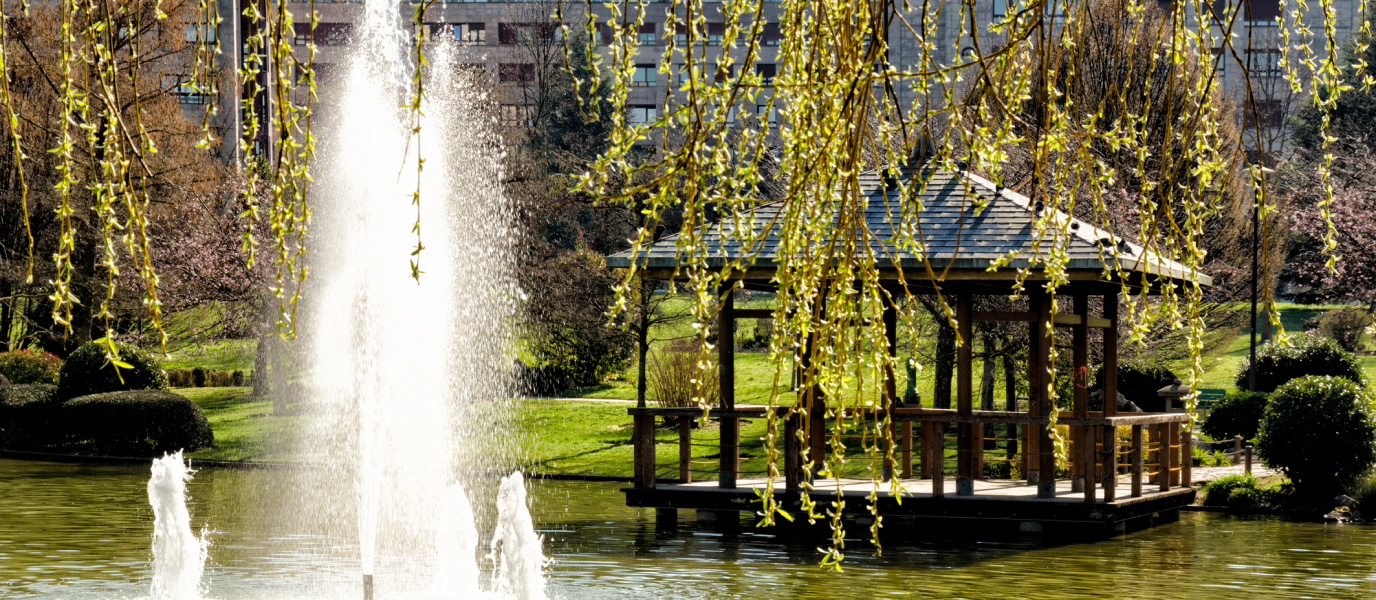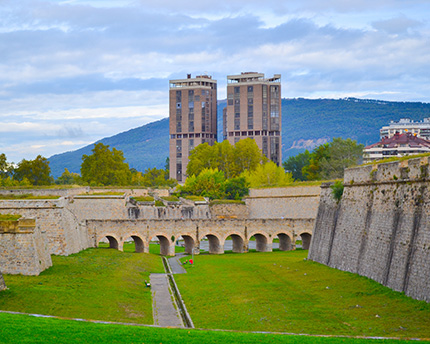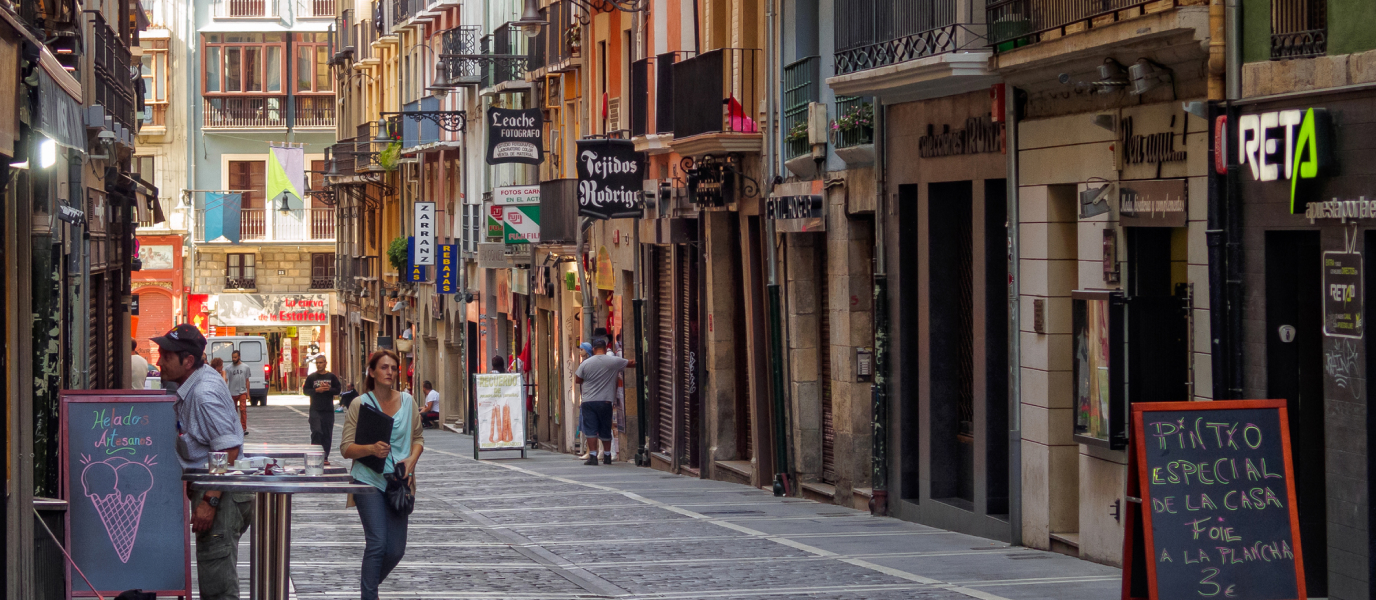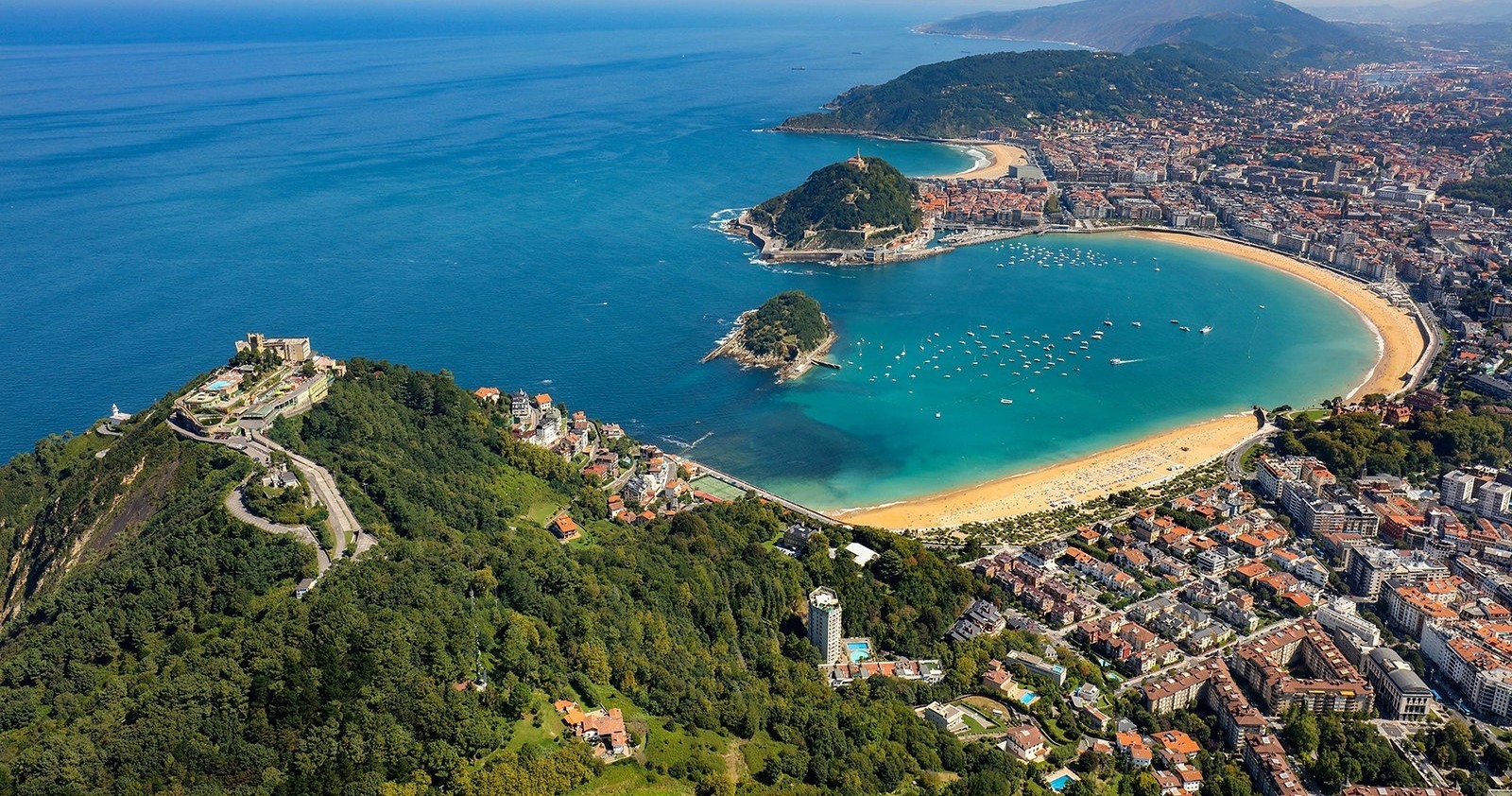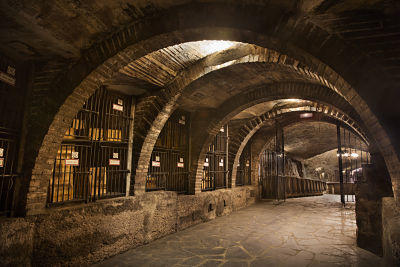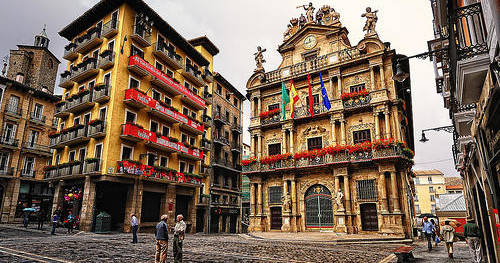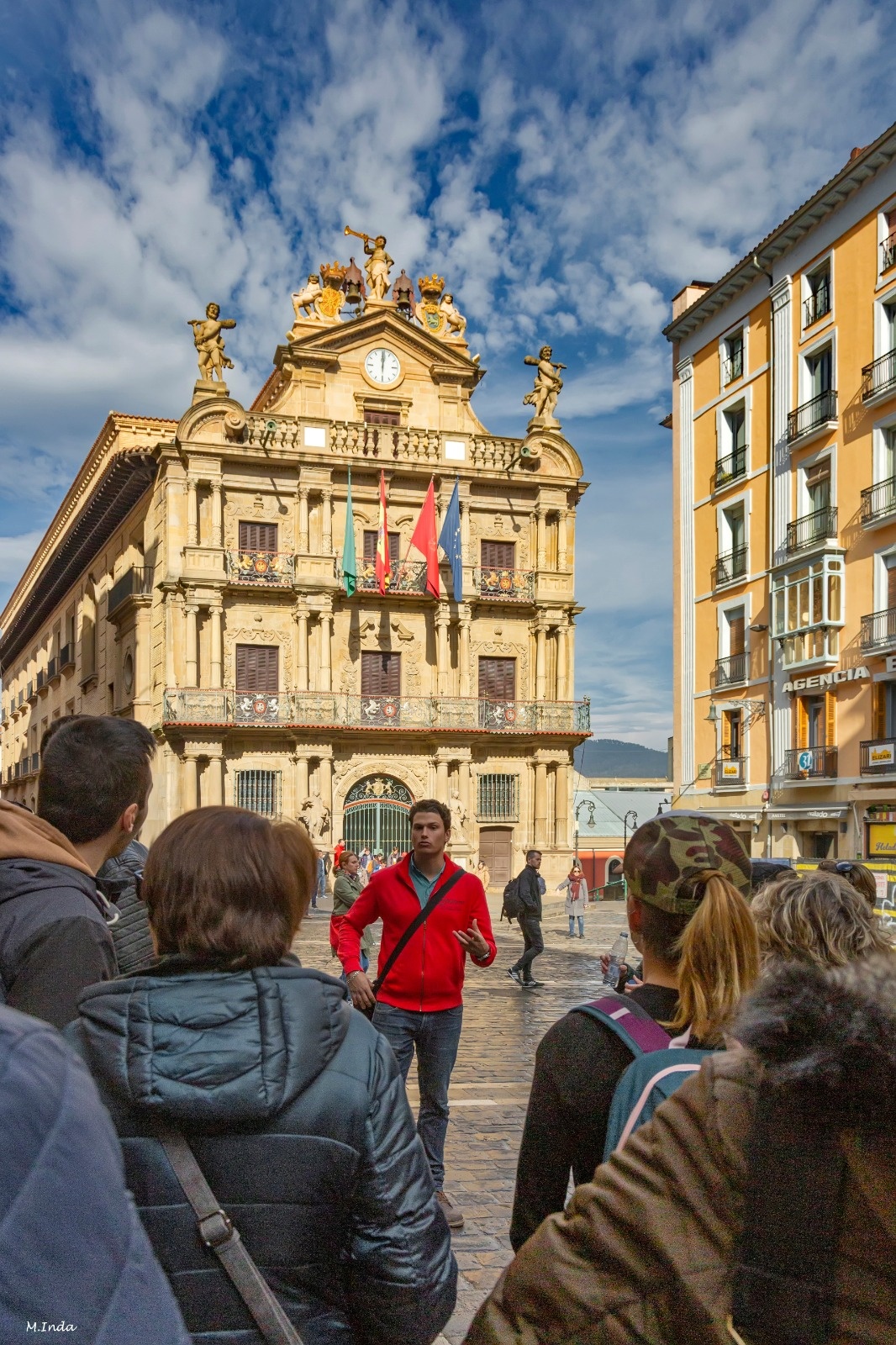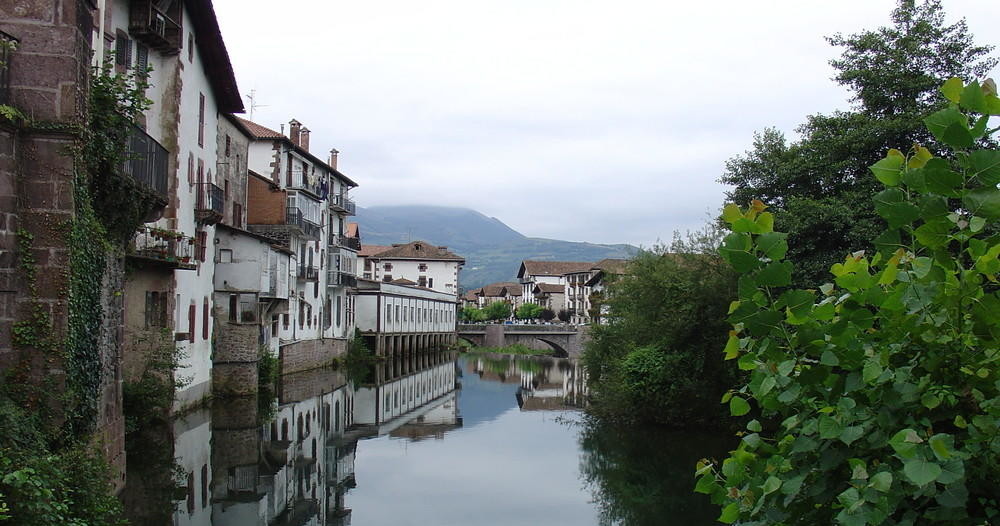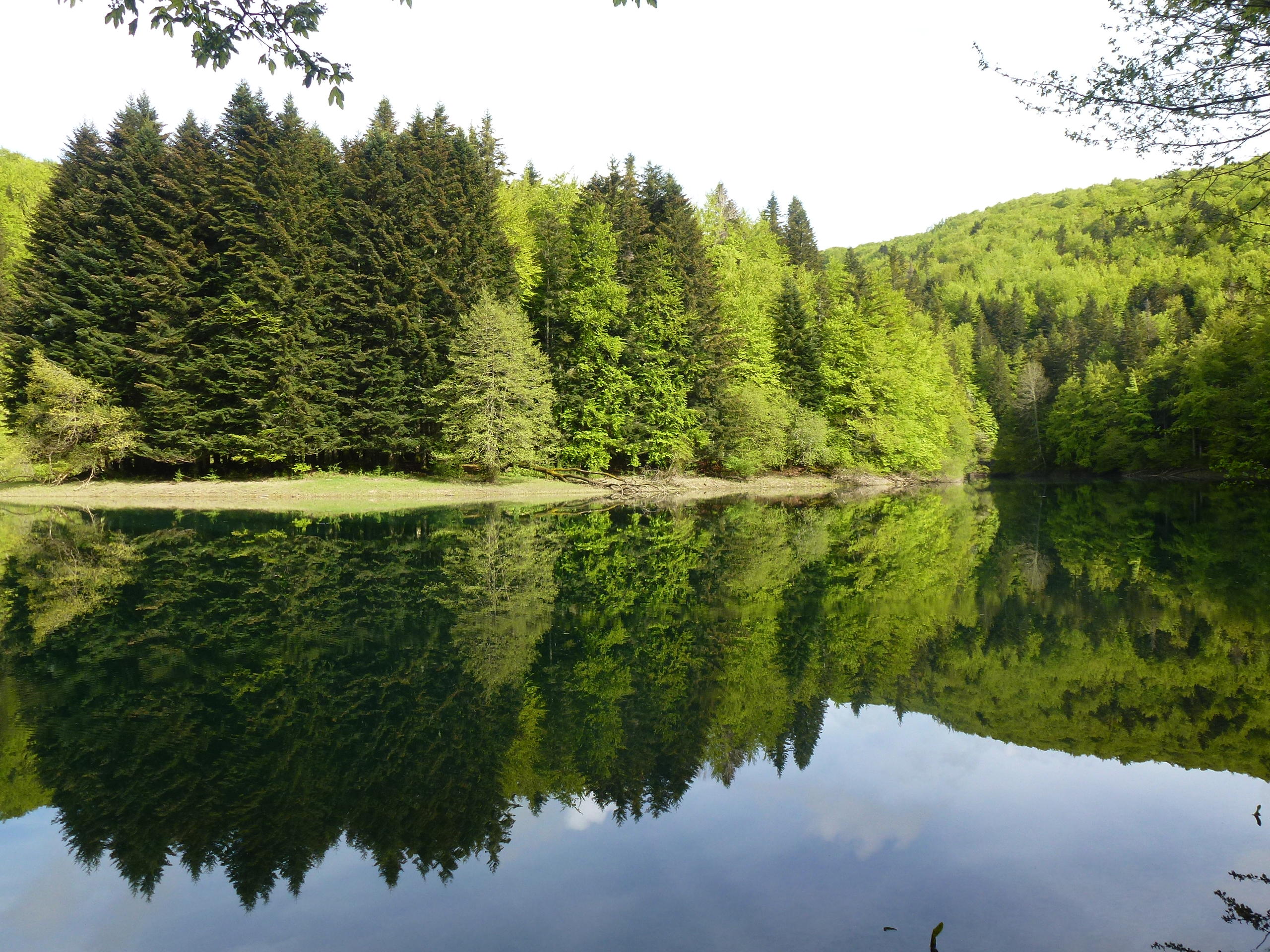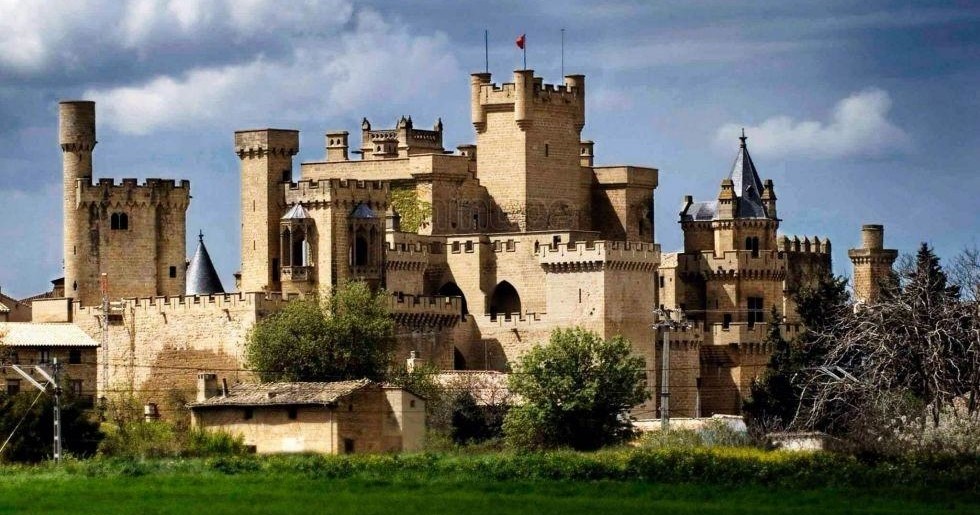Yamaguchi Park is one of those strange places in a city like Pamplona which, precisely because of how unique it is, becomes a truly special space. This little piece of Japan in the middle of Navarre is the result of the twinning of the two cultures and allows all visitors to enjoy magical spots such as the lakeside pagoda, geysers typical of the Asian country’s gardens, and its famous cherry trees which, when they bloom, offer a spectacle that’s difficult to witness in a northern city such as Pamplona.
History of Yamaguchi Park and its relationship with the Japanese city
The birth of this 85,000 square metre park has its origins in the twinning of the cities of Pamplona and Yamaguchi in 1980. The story of the coming together of these two distant places is even more beautiful because they both have in common the life of Saint Francis Xavier, the patron saint of Navarre, and the Jesuit missionary who in the 16th century spread the gospel in Japan, specifically in the area of Yamaguchi.
The spiritual connection that has united Pamplona and Yamaguchi was so strong that it ended up taking a physical form years later, in 1997 to be exact, when the park was built. It gave rise to a garden full of bridges, waterfalls, pagodas, lakes, and geysers like any other in the Land of the Rising Sun.
Yamaguchi Park was in fact designed by two Japanese landscapers who sought to recreate a tribute to the four seasons of the year and to incorporate the Japanese philosophy of relaxation and meditation to make it one of the most special parts of the Navarrese capital.
What you can see on your walk in the park
The typically Japanese garden has more than 400 trees and over 600 plants. Some of these specimens came directly from Asia, such as the Japanese cherry tree, but they are not the only ones that attract visitors, as the range of trees includes weeping willows, oaks, and sequoias.
The park is worth a visit not only for its flora, but also for the lake with its pagoda, the Milky Way Garden, and the Planetarium, which is located inside the park.
Flora
One of the attractions of Yamaguchi Park is undoubtedly the Japanese cherry trees, which provide one of the most anticipated spectacles for visitors when they blossom in spring. But this isn’t the only thing you can enjoy during a walk here. There are swamp cypresses from the USA whose roots protrude from the ground, giant trees such as the ginkgo biloba, considered a prehistoric tree with fan-shaped leaves, or the weeping willow, a species from northern China that looks particularly charming in areas near ponds or streams.
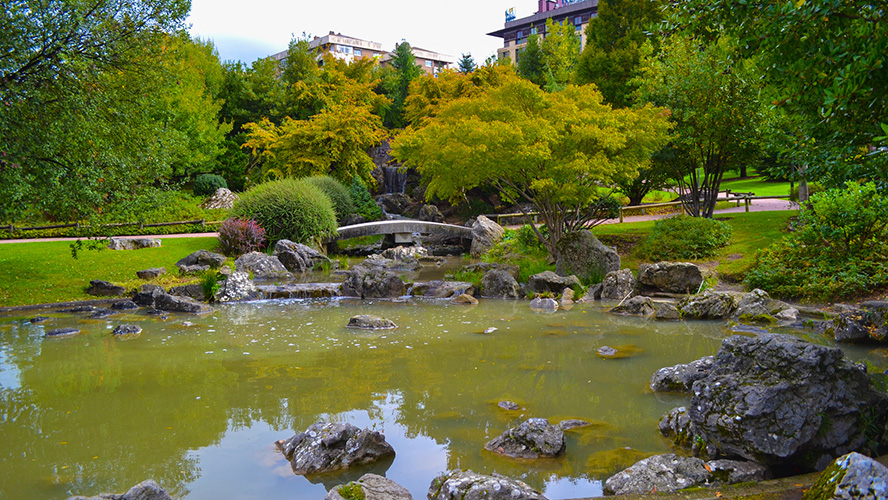
Other highlights include the giant sequoia, which can grow up to 80 metres high, and the Virginia tulip trees, which bloom around May and are filled with a kind of giant tulip that is very eye-catching.
Lake
One of the most magical places in this garden is the lake with the pagoda, the little wooden house in which you can get an insight into the Japanese philosophy of water. This pond represents relaxation, maturity, but also life reflected by the vegetation and as a refuge for the birds that live around it.
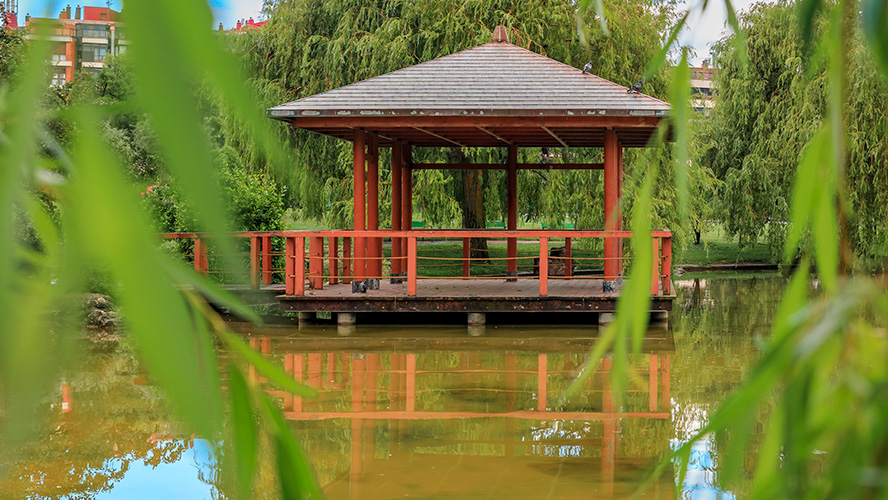
One of the most photographable places in this area is the wooden bridge that crosses it.
Planetarium
This building, built in 1993, is seamlessly integrated into Yamaguchi Park. It has one of the largest domes in the world, 20 metres in diameter, where you can see many stars in motion and scientific exhibitions related to space.
In addition to the large star projector, the Planetarium has 70 other projectors that help to paint a fun picture of the greatest breakthroughs.
Galaxy Garden
This area of the park is one of a kind in Spain. The Galaxy Garden replicates the Milky Way with flowers and bushes so that visitors can literally walk through the stars.
A total of 500 bushes have been planted to symbolise each individual galaxy with its stars, nebulae, and even fearsome black holes measuring 30 metres across.
Walking around and discovering each of the hidden corners is a very easy and educational astronomy lesson that allows you to imagine what outer space is like without leaving Pamplona.
There is only one garden similar to this one in Hawaii.
How to get there
Yamaguchi Park is very easy to get to from the centre, either on foot or by car. From the Plaza del Castillo, you can enjoy a half-hour walk through some of the most important areas of the Navarrese capital, such as the Taconera Gardens and the Citadel.
In fact, from the Citadel you just have to go straight down Avenida de Pío XII and you will immediately come across one of the entrances to this Japanese garden, specifically the one closest to the pond.




































































